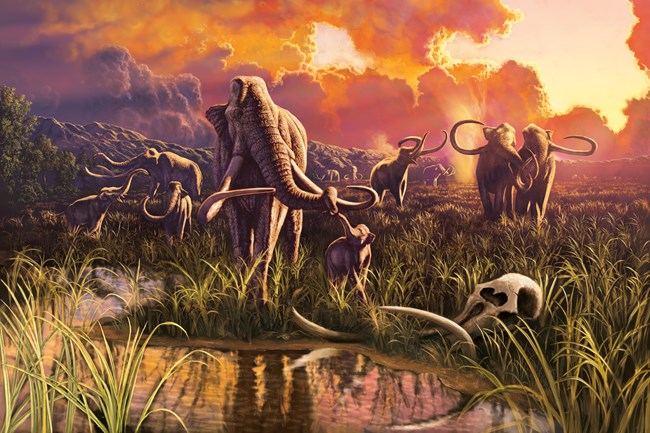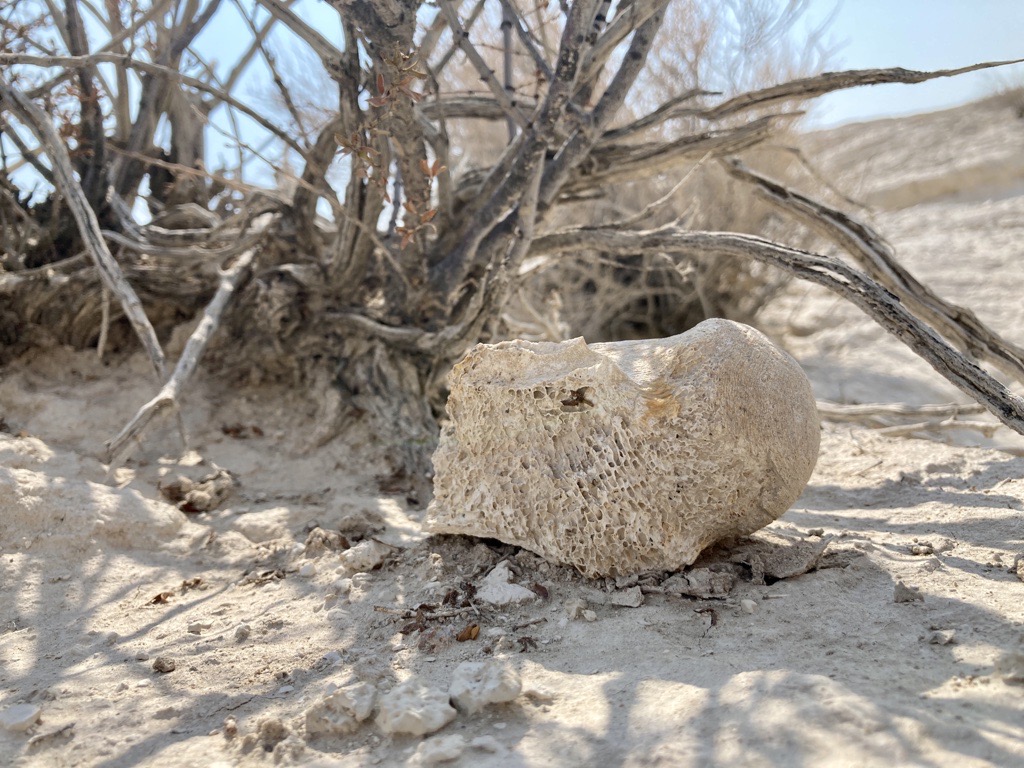
NPS Image | Julius Csotonyi Paleontology at Tule Springs Fossil BedsPaleontology is the study of ancient life through time by looking at fossils. Tule Springs Fossil Beds National Monument was established in 2014 primarily to protect the largest open-air Pleistocene fossil site in the Desert Southwest. 
NPS Photo | Lauren Parry What if I find a fossil?While most fossils lie beneath the surface, sometimes erosion exposes new finds. It is exciting to find a fossil, but important to protect it. If you find a fossil at Tule Springs Fossil Beds, leave the fossil where it is, take a photo, and share your discovery with park staff. Removing fossils from the sites where they were found causes most of the interesting and valuable information about that fossil to be lost forever. It is against federal regulations to disturb or collect fossils from any National Park Service site, including Tule Springs Fossil Beds. Protecting FossilsThe paleontological site monitoring program at Tule Springs Fossil Beds allows us to monitor previously documented fossil sites for changes in fossil condition, natural erosion, and human-caused disturbances. Wind, water, and the hot desert sun can erode away at fragile fossils and crumble the soft sediment. Learn More |
Last updated: June 27, 2023
